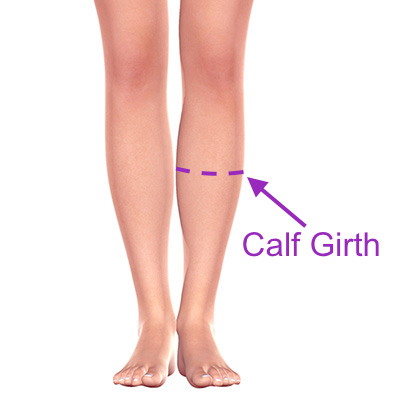
Looking to Buy a Pair of properly-sized Compression Socks?
Click the button below to see the lineup of ComproGear Compression Socks.
NOTE: The page includes a sizing chart and free returns, so you’re always sure to get the perfect size!
Typically, we hear about compression socks and compression stockings because they are the most common types of compression legwear. But do you know there are other types of compression legwear available in the market? Today I will write about all types of compression legwear in the market for you as a helpful guideline to identify which one suits you the best!
Let’s talk compression wear for legs …
What is Compression Legwear?

They are pieces of clothing wrap tightly around the skin to apply pressure to help promote a better circulatory system in the lower extremities.
Compression legwear is typically made of a variety of materials like cotton, spandex, rubber, microfiber, etc. These materials retain their original elasticity and attributes of the shape to make sure they remain tight and fitting to provide you the compression therapy you need. There are different types of compression garments in the market like compression sportswear or even compression maternity garment too but the most common ones these days are still catered to the lower limbs more than any other parts of the human body.
What Does Compression Legwear Do?
They are very helpful in many ways.
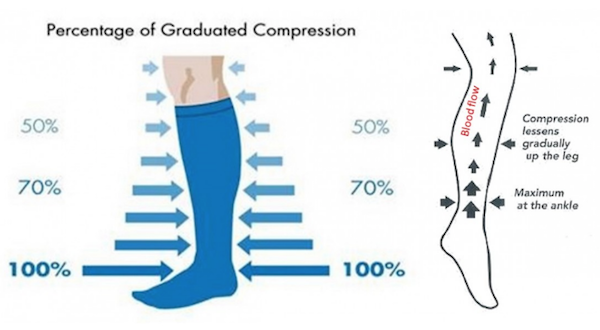
Compression legwear comes in varying degrees of compression pressure levels measured in “mmHg” (millimeters of mercury) depends on the compression level you go for and they typically come in 4 standard compression pressure levels. For example, the first medical-grade pressure level is measured at 20-30 mmHg, which means the compression pressure will not fall below 20 mmHg and at the same time not exceed 30 mmHg.

By exerting compression pressures on your lower limbs, they are proven helpful to improve your blood circulation in the lower extremities against the pull of gravity. At the same time, they help straighten out the vein walls to a better working state. The gentle compression pressure applied allows the valves to function properly by opening to allow blood flow toward the heart and closing to prevent blood from flowing backward. This allows circulation to work as it should and is proven helpful to prevent horrible leg diseases.
List of diseases caused by poor blood circulation:
- Venous reflux disease (Chronic venous insufficiency)
- Varicose veins
- Spider veins
- Deep vein thrombosis
- Peripheral edema
- Lymphedema
- Phlebitis
- Lipodermatosclerosis
Compression legwear is especially popular among athletes and sports enthusiasts
The pressure support provided by the legwear is proven helpful to enhance performances for professional and amateur athletes.

The benefits and advantages include:
- Improved circulation and blood flow which means more oxygen/nutrients are delivered to the muscles
- Reduces delayed onset muscles soreness that can happen 24 to 72 hours after exercise
- Flushes the body of waste products including carbon dioxide and lactic acid
- Reduces recovery time from injuries, strains
- Improves perceived exertion
- Can control body temperature
- Provides physiological advantages- These can be simply feeling like you look better, which can boost your confidence and motivation
- Aids in proprioception or how you sense your body’s position in space creating a more efficient muscle movement aspect
- Moisture can be repelled or “wicked” away from the body, allowing it to evaporate faster

Looking to Buy a Pair of properly-sized Compression Socks?
Click the button below to see the lineup of ComproGear Compression Socks.
NOTE: The page includes a sizing chart and free returns, so you’re always sure to get the perfect size!
Popular Articles on ComproGear
Best Compression Socks for Varicose Veins Best Compression for Varicose Veins
How Long to Wear Compression Socks for Edema Do Compression Socks Help with Edema?
Graduated Compression Leggings & Graduated Compression Tights
Best Compression Socks for Standing All Day Socks for Standing Long Hours
How Many Types of Compression Legwear are There?
There are several types of compression legwear on the market, tailored to different types of people. From stay-at-home-mum to professional basketball players, you name it, there is one for everyone out there. I’ve prepared a list of compression legwear for you as a future guide should you find yourself having trouble picking which compression legwear suits you the most.
Type 1
Compression Socks

Yes. We’ve all guessed right. Compression socks are the most common compression legwear in the market because they cover the widest audience base. Compression socks come in a variety of lengths too like ankle-high, knee-high, thigh-high and even different types like closed-toe, open-toe, with or without zippers, etc catered to different types of people and even funky patterns too, so, you don’t need to compromise the fashionista side of you to achieve great health! They are great for almost everyone in the world like:

- Heavy manual labor – Wearing them during long work shifts can reduce the discomfort of lower limbs for heavy manual labor that requires extended standing and sitting hours.
- Pregnant women – They can help eliminate lower limb edema for pregnant women during the third trimester and prevent varicose vein thrombosis of lower limbs after delivery.
- Bedridden patients – They can help prevent deep vein thrombosis of the lower limbs and also accelerates wound healing after carious operations and restores functions of the lower extremity, especially after a venous surgery.
- Athletes/Sports enthusiasts – Wearing them during training can help the skeletal-muscle pump, increase deep venous velocity and decrease blood pooling in the calf veins and alleviate delayed-onset muscle soreness.
- People with obesity – People who have obesity are recommended to wear them regularly to promote better blood circulation due to high levels of blood cholesterol and blood lipids, increased blood viscosity and excessive weight. All of those make it difficult for the venous blood to flow back to the heart, leading to venous diseases of the lower limbs.
- Frequent travelers – Wearing them during flights is great at preventing and treating Economy Class Syndrome, which is deep vein thrombosis.
- Diabetic patients – Wearing them can help provide support to the lower extremities to effectively prevent diabetic foot ulcers and other severe leg diseases like venous insufficiency, peripheral edema, and deep vein thrombosis that are prone to develop due to poor blood circulatory system in the lower limbs caused by diabetes.
Type 2
Compression Stockings
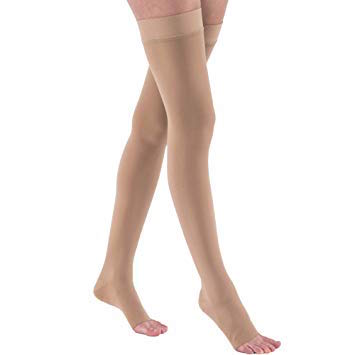
Compression stockings are the second most common compression legwear out there in the market. They look just like any regular stockings but they function under the principle of any compression wear. Depends on your daily activities, compression stockings come in different lengths too, like knee-high, thigh-high, and also pantyhose to cater to your needs.
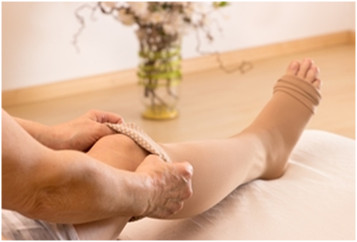
Compression stockings are great alternatives for any pretty ladies out there who wear regular stockings to work like:
- Flight attendants
- Teachers
- Office ladies
- Waiters
- Business ladies
- Nurses
- Pregnant women

Looking to Buy a Pair of properly-sized Compression Socks?
Click the button below to see the lineup of ComproGear Compression Socks.
NOTE: The page includes a sizing chart and free returns, so you’re always sure to get the perfect size!
Type 3
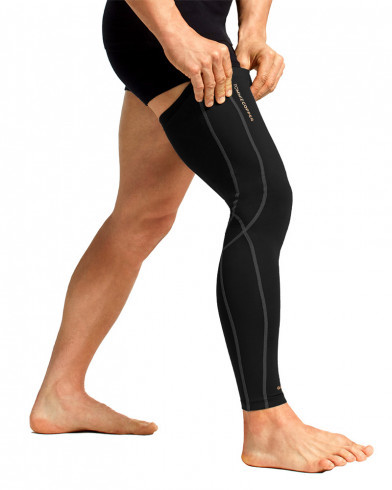
Compression leg sleeves are also known as compression calf tights/tube socks. They are invented by the Nelson Knitting Company of Rockford, Illinois, just over 50 years ago, in 1967- the same year that America’s first professional soccer leagues were established. Compression leg sleeves soon became a product of Americans’ simultaneous love of sports, technological innovation, and fashion statements. They are particularly popular for people playing basketball and soccer.
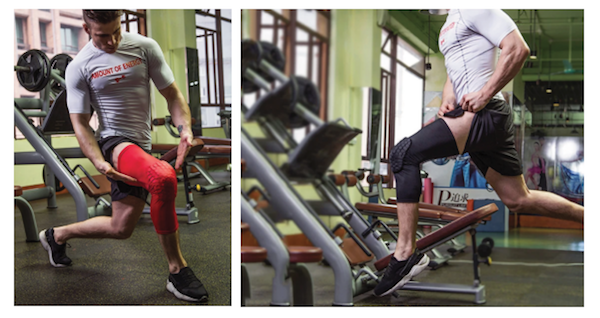
The difference between compression socks and leg sleeves is that the latter is mainly used for intensive training while the compression socks are used for after training. It is not advisable to use compression leg sleeves after a workout because there is no compression on the feet, only the calves and because of this your feet might be painful and fluid retention can develop.
Compression leg sleeves are good for those who spend a lot of time in the gym working out and are active in sports that are consisted of heavy leg movement like:
- Basketball players
- Soccer players
- Cyclists
- Runners/Marathon runners
- Wrestlers
- Dancers
- Or any athletes/sports enthusiasts
Type 4
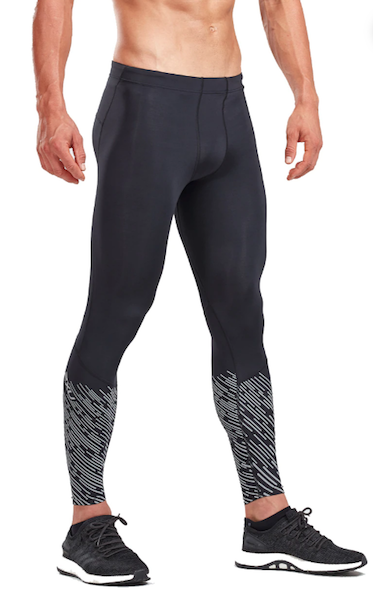
Compression tights/leggings are form-fitting undergarments usually worn by athletes. They could look very similar to the common tights/leggings you wear but the materials used in manufacturing the two are very different. Common tights and leggings are typically created from sheer materials, much like pantyhose, while compression tights and leggings are often made of Lycra/spandex, polyester, and other blends of materials. They can come in styles like full coverage for the foot or footless for your preference. Because compression tights/leggings have been designed to be very attractive, you can also use them as a fashion statement, when you are not in the gym or out on the field!
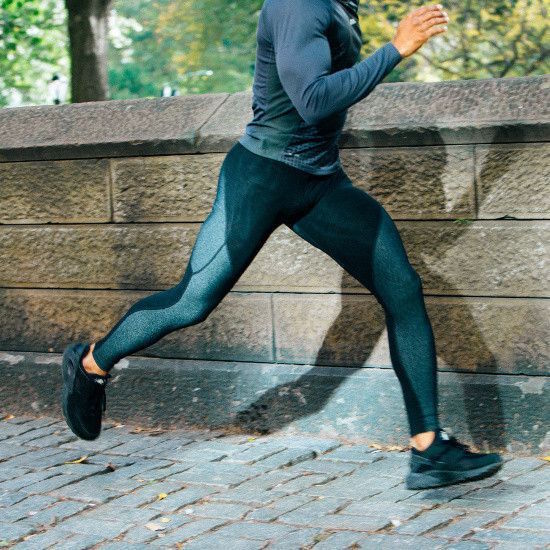
Just like compression leg sleeves, they are good for those who spend a lot of time in the gym working out and are active in sports that are consisted of heavy leg movement like:
- Cyclists
- Runners
- Dancers
- Or any athletes/sports enthusiasts
Type 5
Compression Shorts
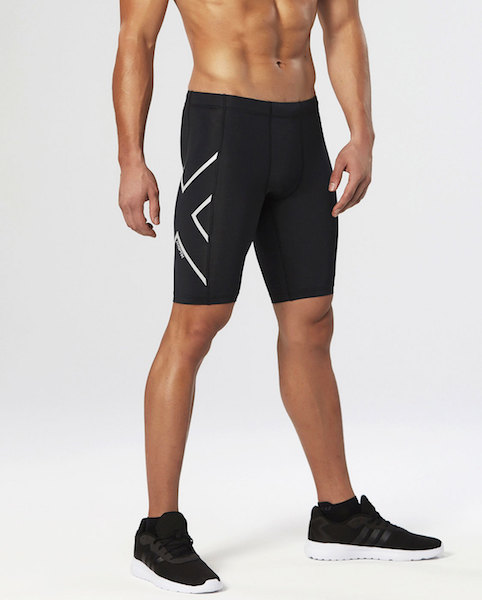
Much like compression tights/leggings, the only difference is the length. The name itself is as literal as it is – shorts with compression support or compression shorts for varicose veins. If you doubt what you can benefit from wearing them, there are actually more benefits than you can imagine. Even with shorts, the pressure you are applying to your thighs, hips, and pelvis provides better control of your body, which is central when running. They also provide pressure to your butt and thigh area, which many athletes find them quite comfortable and more practical with little wind resistance compared to traditional athletic shorts because they cause less chafing and friction. Also, compression shorts won’t ride up when you are running, squatting, doing sit-ups, or stretching, among other activities.

Like the last two above, compression shorts are great for those who spend a lot of time in the gym working out and are active in sports that are consisted of heavy leg movement like:
- Cyclists
- Runners
- Basketball players
- Soccer players
- Wrestlers
- Baseball players
- Or any athletes/sports enthusiasts
The End
Choose the one that suits you the most
We have covered all types of compression legwear and let them be your guide in choosing the right one that suits you. In conclusion, there is no right or wrong answer to which type of compression legwear you should go for. It’s a matter of personal preference. Go for the one that is the most compatible with your day-to-day activities. The more important part is to choose the right compression level for the best treatment and prevention. The right compression wear can go a long, long way!

Looking to Buy a Pair of properly-sized Compression Socks?
Click the button below to see the lineup of ComproGear Compression Socks.
NOTE: The page includes a sizing chart and free returns, so you’re always sure to get the perfect size!
This page last updated November 2, 2022
